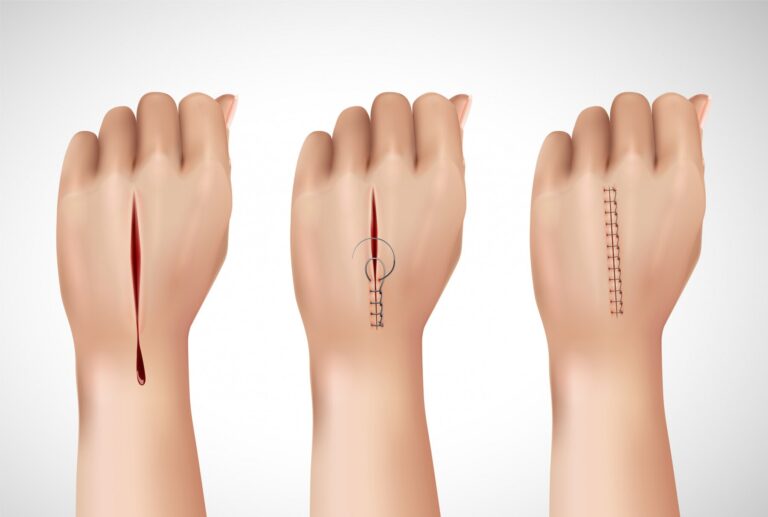Open wounds are a common occurrence in daily life and refer to injuries that involve a break in the skin’s surface, exposing the underlying tissues. Examples include cuts, scrapes, punctures, and lacerations. Proper wound care can reduce the risk of complications and promote effective healing. This article explores the steps to take when dealing with an open wound, recognizing warning signs, and understanding when professional medical attention is required.
When Should I Seek Medical Attention for an Open Wound?
Certain types of wounds or symptoms indicate the need for professional care. Seek prompt medical attention if the wound Is deep, jagged, or continues to bleed after applying pressure. It would also be a good idea to seek medical attention if the wound occurs due to an animal or human bite, as such wounds have a higher risk of infection. Other reasons to seek care is if the wound was caused by a rusty or contaminated object. This is if tetanus immunization isn’t up to date or if there are signs of severe infection such as a fever, red streaks extending from the wound, or swelling. Prompt medical evaluation can prevent complications.
How Do I Know If My Wound Care Routine Is Enough?
Caring for an open wound at home often involves several basic steps. Start by washing your hands thoroughly to prevent introducing bacteria to the wound. Once clean, focus on the following actions:
- Cleaning the Wound
Flush the area with clean water to remove visible dirt and debris. Mild soap can be used around the wound, but avoid applying it directly to the affected area.
- Applying Antibiotic Ointment
After cleaning, applying over-the-counter antibiotic ointments can assist in creating a protective barrier for the wound.
- Covering the Wound
Use clean, sterile bandages to cover the wound. Replace these daily or whenever the bandage becomes wet or dirty.
Routine wound care is practical for minor injuries, but if pain, swelling, or redness persists after several days, professional advice is recommended.
How Do I Know If My Open Wound Is Infected?
Recognizing signs of infection early is critical for preventing more severe complications. Common indicators of an infected wound include Increasing pain or tenderness in the injured area, swelling, redness, or warmth that continues to spread. It can also be if discharge of pus or a foul-smelling odor from the wound, or if a fever or chills accompanying the injury. Keep in mind that even small wounds have the potential to become infected. Observing the wound regularly and seeking medical advice in case of any concerning symptoms can help address infections in their earlier stages.
How Can I Help My Wound Heal Faster and Prevent Complications?
Fostering a healing-friendly environment for open wounds requires thoughtful care. Consider these recommendations when managing the wound. Keep the wound clean and moist. Consistently clean the wound and apply ointments that preserve moisture. A moist environment can speed up healing. Avoid letting wounds dry out, as scabs can sometimes delay the healing process.
Updated tetanus shots is another prevention. This is for individuals with puncture wounds or injuries exposed to dirt. A medical provider can recommend this based on your immunization history. Avoiding common mistakes is also a preventative measure. Avoid using hydrogen peroxide or alcohol directly on wounds, as these can irritate tissues and slow healing. Picking at scabs or touching the wound unnecessarily may also increase the risk of further injury or infection. Regularly check for any changes in size, color, or discharge from the wound. Healing progress often involves reduced redness and gradual closure of the wound.
Take Action for Safer Wound Recovery
Treating open wounds carefully can prevent complications and promote faster healing. Knowing when at-home wound care is sufficient and when to seek professional help is valuable in any situation involving injury. For those focusing on preparedness, learning basic first aid skills or consulting a healthcare provider for more personalized guidance may be beneficial. Prioritize safe wound management to protect overall health and well-being.

